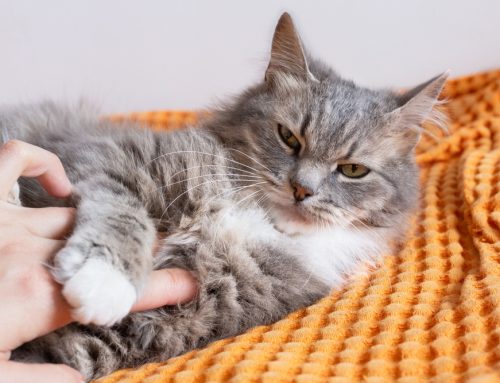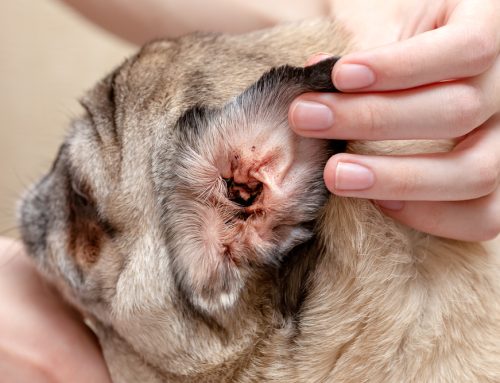As a responsible pet owner, you know your pet should be spayed or neutered. In addition to helping control the pet homelessness crisis, these procedures help prevent serious health conditions, such as uterine infections, mammary tumors, testicular cancer, and prostate problems. They also benefit your pet’s behavior, including preventing your female pet from experiencing heat cycles, decreasing your male pet’s proclivity to roam and mark their territory, and mitigating your male pet’s aggression. However, we understand that despite knowing that spaying or neutering is in your pet’s best interest, you still have reservations, because you don’t know what these procedures entail. Our team at Countryside Veterinary Hospital would like to help you know what to expect when your pet is spayed or neutered.
Pre-spay and neuter instructions for pets
Considerations before your pet undergoes surgery include:
- Vaccinations — To help prevent common diseases, your pet should ideally receive core vaccines at least one week prior to surgery. While no vaccine is 100 percent effective, vaccination will lessen your pet’s chance of contracting a disease, and will decrease the disease’s severity should they become ill.
- Fasting — Most pets should be fasted starting at midnight the night before their surgery. If your pet is under 16 weeks of age, our veterinary professionals may recommend feeding a small amount of food the morning of their surgery. Your pet should have free access to water at all times.
- Confinement — Keep your pet indoors the night before surgery, to ensure they do not eat unknown or foreign objects that could pose a dangerous problem during surgery.
- Blood work — Pre-anesthetic blood work is recommended for pets undergoing anesthesia, to ensure they are healthy enough for the procedure.
Spay and neuter procedures for pets
Pets are put under general anesthesia when they are spayed or neutered. Cats and dogs are intubated. Your pet will receive an injection before undergoing general anesthesia to make them sleepy and help manage their pain, and their oxygen levels, blood pressure, CO2, and heart rate will be continuously monitored throughout the procedure with state-of-the-art SurgiVet equipment. Your pet will be kept on a heating blanket during surgery and recovery to ensure their body temperature does not drop too low. The actual surgical procedure entails:
- Dog and cat spay — An incision is made below the navel into the abdomen. The ovaries and uterus are removed through this incision, after the vessels supplying these organs are ligated. The incision is then closed under the skin using two layers of stitches, which will dissolve and be absorbed by the body. The skin itself is closed using skin glue, skin staples, or stitches. A female dog spay typically takes 20 to 90 minutes, and a female cat spay usually 15 to 20 minutes, with surgery time depending on your pet’s age, size, and heat status. When female pets are in heat, their reproductive tracts are more fragile and hold more blood, making the procedure more difficult and time-consuming.
- Dog neuter — An incision is made in the skin at the base of their penis, close to their scrotum. Their testicles are removed through this incision after the vessels supplying these organs are ligated. The incision is closed using stitches under the skin that will be absorbed by the body, and the skin is closed using skin glue, skin staples, or stitches. A dog neuter usually takes 5 to 20 minutes, depending on their age and size at the time of the procedure.
- Cat neuter — An incision is made in the scrotal skin, and the testicles are removed through this incision, which is not closed, and will heal over time. A cat neuter can typically be performed in under two minutes.
Spay and neuter aftercare for pets

Your pet may be slightly groggy the evening after their procedure, but if they are unresponsive or acting in a concerning manner, contact our team at Countryside Veterinary Hospital so we can determine if they need emergency care. Other issues include:
- Eating and drinking — Limit your pet’s water and food from when you return home through the evening following their procedure. Once they have been home a few hours, you can offer them a small amount of water, followed an hour later by a small amount of their regular food.
- Medications — Your pet may be prescribed medication to encourage healing and recovery and manage their pain. Never administer medication to your pet without consulting a veterinary professional. Several human medications can be extremely dangerous for pets.
- Exercise restriction — Restrict your pet’s activity for about 10 to 14 days to prevent failing stitches, bleeding, pain, and other post-surgical problems.
- Surgical site care — Monitor your pet’s incision daily for swelling, redness, discharge, and bleeding. An Elizabethan collar may be necessary to discourage your pet from licking or chewing their incision.
- Bathing and swimming — Do not bathe your pet, or allow them to swim, until their incision is fully healed, typically 10 to 14 days after surgery.
Knowing what to expect when your pet is spayed or neutered can help alleviate your stress and anxiety. If you would like your pet spayed or neutered, contact our team at Countryside Veterinary Hospital to schedule an appointment.








Leave A Comment